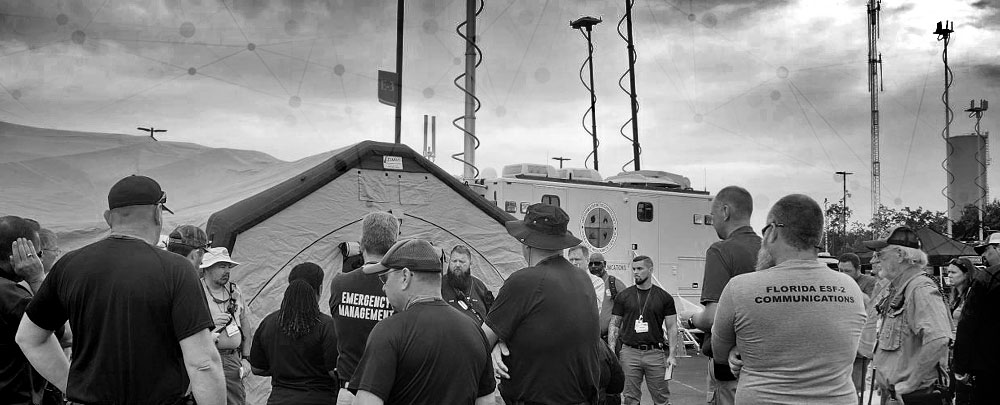Emergency response has evolved in the two decades since 9/11, when interoperability emerged in earnest as a key challenge. Radio interop has matured, with time-tested and readily-available solutions. But emergency operations as a discipline has struggled to adopt interoperable data in the same way, even with an ongoing emphasis on standardization and training.
Now, add drone imagery, live video feeds, intel from mainstream and social media, and other complex, actionable information to the mix and the path forward is clear: it’s not enough for first responders to have radio and voice comms. Teams must also be able to share high-bandwidth data in real time.
There are obstacles, to be sure, and the guidelines and best practices being developed for data interoperability are in many ways in their early days. The challenges are unique, but interoperable information sharing is no longer optional, and practicing perishable skills is critical to success.
In this spirit, over 300 participants from 29 states and the District of Columbia converged on Quapaw, Oklahoma in September for the 2024 Central States Communications Exercise.
Exercising Interoperability in the Heartland
As the largest communications exercise in the United States, Central States is an ideal test bed for data interoperability solutions and practices. Recognizing that Incident Communicators at every level face obstacles in this area, the event’s organizers incorporated specific data sharing challenges based on feedback from participating agencies.
Jonathan Ayres of the Central States Communications Association had this to say about their approach:
“The Central States Communications Exercise has shown value to Incident Communications Professionals by taking the feedback from local level responders on their needs and challenges; and providing a collaborative environment to work together to solve these issues.”
Planned scenario injects forced participants to find ways to share mission-critical information with other agencies, requiring ingenuity in the moment — and trust when we say, it’s not as easy as patching radio traffic together!
Fortunately, answers to the data sharing question are out there—they can just be elusive. At the exercise, some agencies were able to share information through “virtual workspace” collaboration systems for a clear, common operating picture. Others were able to leverage technologies demonstrated by on-site vendors (like Nomad) to address data-sharing challenges.
In the end, the exercise pointed to an overarching lesson for emergency operations professionals: figure out how you’re going to share information before the incident.
 Exercise Takeaway
Exercise Takeaway
Maintaining and testing deployable equipment is an ongoing task. Regular use of assets such as radio gateways, data sharing solutions, and satellite systems will ensure they are ready and waiting when needed. Prolonged inactivity can mean extended startup times and troubleshooting delays.




Real World Applications
As an added twist to the Central States event, Hurricane Francine struck the southeast United States during the exercise, which forced several participants (including sponsors!) to demobilize, adjust operations, and redeploy to support relief efforts. This caused some of the data sharing options to change during the scenario, which is very realistic. In an exercise, even unscripted variables can add valuable training opportunities.
Data Sharing is THE New Challenge
As the saying goes, “Prior Planning Prevents Poor Performance.” Asking the hard questions now about data sharing, working toward solutions, and exercising them regularly will pay dividends when the emergency occurs in your area. An experienced solutions integrator like Nomad GCS will help.
Interop is critical. Collaboration is everything. Nomad was honored to sponsor and participate in the 2024 Central States Communications Exercise.

